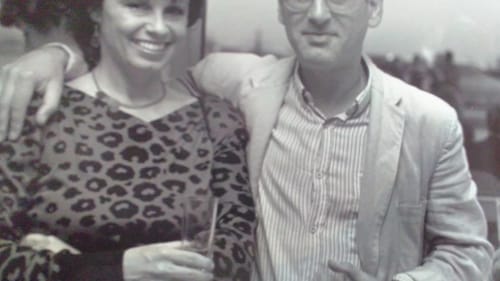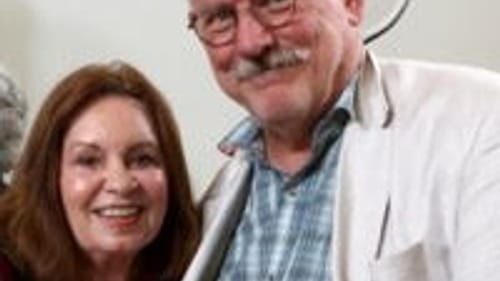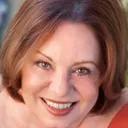Stay in the Loop
BSR publishes on a weekly schedule, with an email newsletter every Wednesday and Thursday morning. There’s no paywall, and subscribing is always free.
The relâche summer
A dance critic’s musical journey

Alex Ross’s profile of pianist Igor Levit in the May 18 issue of The New Yorker got me thinking about how much I know about music and how that developed my skills as a dance critic and writer. While I’m neither a musicologist nor a music critic, the story reminded me of my real musical education.
Glee club and LPs
It began in a rudimentary way. At Philadelphia’s Academy of Music, I performed Broadway show scores as an obligato voice in Hallahan High’s glee club, my voice dancing above the melodic lines like punctuation. Hallahan’s music director, Sister St. Agnes, loved shows like South Pacific and The Sound of Music. I listened to my mother’s 78s of composers like Chopin, Brahms, Tchaikovsky, Shubert—mostly 19th-century romantics. Mahler may have been the only 20th-century music I heard before I was 19.
Today, you can walk down Philadelphia’s Avenue of the Arts on Broad Street and see hundreds of brass plates honoring famed people in the music business from Philly. I met some of them in one of my first jobs out of high school, as a receptionist for a music agent/manager. Nat Segal, who had once managed Philly-born Billie Holiday, was managing Jerry Blavat at the time. Nat was just as much a misogynist as every man who walked through our door was, including Phil Spector, who called me “Big Mouth” because I ratted on the men who commented on my anatomy. Nat would just wave it off while his pipe trailed its cherry-tobacco scent through the air. Nevertheless, he gave me great gifts, among them his LPs of Bruch, Mendelssohn, Sibelius, and Schoenberg.
The music and the footwork
Throughout the ’60s I didn’t know much more about dance than what I was exposed to at Barbara Weisberger’s Pennsylvania Ballet, some guest appearances by Merce Cunningham and Martha Graham at the Gershman Y, and touring companies like the Bolshoi. Maya Plisetskaya gave her first farewell tour at the Academy in 1968 and I still have the program. Having dance training, I knew a battement from an entrechat, a tour jeté from a stag leap. When I went to the ballet, I knew the music and followed the footwork with the beats, predicting what would come next.

Reading Ross’s engrossing piece, with its scintillating adjectives and musical terms, I realized my musical education really launched when I understood an adagio from a glissando, a crescendo from a decrescendo.
Relâche years
It began informally, in our Queen Village living room hosting our friends Joseph Franklin, Joseph Showalter, and Annson Kenney, as they formed The Relâche Ensemble for Contemporary Music in 1977, named for Relâche, the 1924 ballet by artist Francis Picabia and composer Eric Satie. “Relâche” roughly translates to a canceled performance or a theater going dark—which had famously happened on the show’s opening night (the principal dancer was unwell), causing a near-riot in front of the Paris Opera.
In the ’80s, as a press person for Relâche, I began to learn the meaning of terms like dissonance, atonality, and twelve-tone (what Schoenberg was doing), serialism (never liked it much), minimalism (Glass, Reich, Riley), and extended harmony (James Tenney).
There was always pianistic work swirling around us. My husband, AJ Sabatini, performed Frederic Rzewski’s Coming Together, a setting of letters from Sam Melville, an inmate at Attica State Prison, at its Philadelphia premiere at the Mask and Wig Club in the ’70s, with Relâche pianist Heath Allen.
Ross writes that Igor Levit greatly admires pianist Marc-André Hamelin, who had studied at Temple University. Hamelin performed another of Levit’s favorites, Charles Ives’s Sonata No. 3 for Violin and Piano, with local violinist Diane Monroe at 1987’s Relâche-produced New Music America in Philadelphia, a two-week festival featuring significant living composers and musicians. Ursula Oppens performed Frederic Rzewski’s Four North American Ballads, with Rzewski, a bristly character, in the audience. Although Hamelin performed Rzewski’s The People United Will Never be Defeated several times with Relâche, his Coming Together became a hallmark work of Relâche.

Last summer
I always describe the music in my reviews. My musical awareness served me well while covering dance festivals in Europe last summer. At La Biennale di Venezia, William Forsythe put the first half of A Quiet Evening of Dance to Morton Feldman’s Nature Pieces. Audiences liked the second, more raucous half with its hip-hop beats better. But, for me, the twittering birdsong-like piano plinks played perfectly to Forsythe’s birdlike pointed-toe ballet moves. The 2020 festival has boldly rescheduled to late September. They think they know how to deal with the pandemic and I hope they are right.
At Berlin’s Tanz Im August, CCN - Ballet de Lorraine performed Merce Cunningham’s RainForest and Sounddance to scores by Philadelphia native David Tudor. RainForest evoked birds chittering madly before a storm or from an onrushing forest fire. The dancers furiously leapt, death-dropped to the floor, rapidly flicked limbs, and alternated whiplash turns. Tudor’s madly percolating scores sounded fresh as this morning’s first burst of birdsongs.
The rest
If the pandemic hadn’t happened, I’d be preparing to fly to the Berlin festival. I’d have looked for a Levit performance and gone to hear him; maybe snagged him for an interview. Does he know Stephen Montague’s Paramel VI or William Duckworth’s The Time Curve Preludes? Levit has been streaming performances from home in quarantine, including a recent rendition of Satie’s 24-hour Vexations. As I write, I am listening, trying to learn more.
With the city so quiet in summer 2020, I hear birds outside my window swirling above Levit’s somber playing. Like so many of us, I’m sure he longs to see the curtains going up and the stage lights bright again. But, like almost everything else, all is relâche.
Sign up for our newsletter
All of the week's new articles, all in one place. Sign up for the free weekly BSR newsletters, and don't miss a conversation.

 Merilyn Jackson
Merilyn Jackson